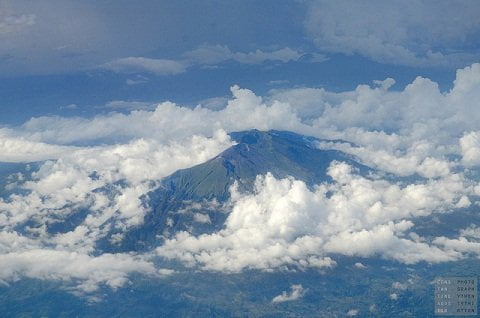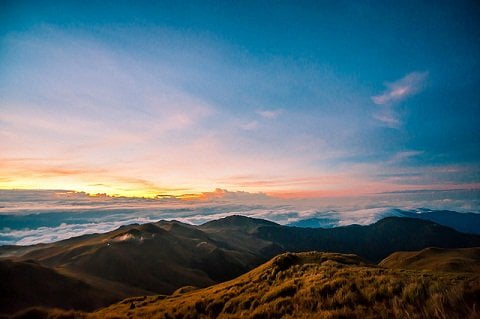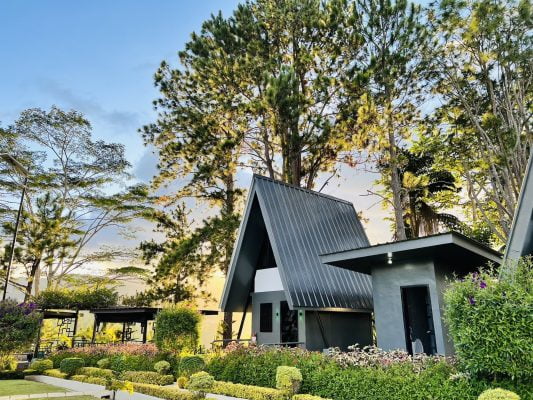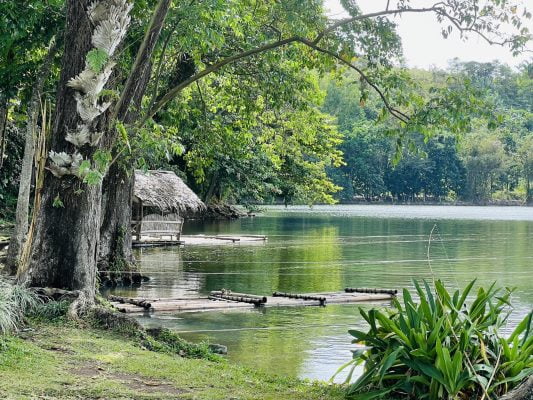Mountain climbing is easily one of the most exciting adventures a traveler can experience anywhere in the world. The thrill of reaching summits, discovering unique flora and fauna and swimming in hidden waterfall basins are just some of the reasons why a climber endures the hardships and risks his neck during a climb.
Being a beautiful country with rich natural attractions, mountain climbing in the Philippines can be an extremely rewarding experience. The tropical climate it enjoys adds to the allure of its mountains. There are no snowcapped peaks, only rainforests and crater lakes. Being in the Pacific Ring of Fire has some perks; for one, it made the Philippines an outdoorsman’s paradise.
There’s almost no shortage of mountains to summit in the Philippines, the limit is only your time and sense of adventure. Philippine mountains have varying levels of difficulty; some can easily be climbed by first-timers and some are fit only for the seasoned mountaineer. Here are five of the best and most beautiful mountains to climb in the Philippines.
Mount Apo

Mount Apo is the highest peak in the Philippines located in Southern Mindanao. The provinces of North Cotabato and Davao del Sur and the progressive Davao City lie at its foot and mountaineers usually pass through these places if they’re headed to its peak. The mountain is actually a dormant volcano with three peaks; at its highest elevation is a crater with a small yet stunning crater lake. It is now a National Park protected to preserve its biodiversity.
The mountain is one of the most challenging climbs in the Philippines, due mainly to its elevation and moss-covered trail. Its peak takes about two days to summit, provided that weather conditions are ideal. There are three main trials for climbers: one in Kidapawan City, North Cotabato, one in Kapatagan and another one in Sibulan. The last two entry points are in the province of Davao del Sur.
Mount Apo is home to a number of endemic species of flora and fauna. Although it’s very rare, some mountaineers have been lucky to have spotted the Philippine Eagle, also known as the monkey-eating eagle. Durian can also be found growing on the mountainsides.
Mount Guiting-guiting
Mount Guiting-guiting or G2 is one of the most technically difficult climbs in the Philippines, along with Palawan’s Mount Mantalingajan and Mindoro’s Mount Halcon. The mountain is located in Sibuyan Island, itself a destination for backpackers looking for a rustic beach getaway. Guiting-guiting is the local word for jagged, which best describes the mountain’s saw teeth shaped terrain.
G2 is not for the first-timer; the treacherous climb requires the skills and stamina of a seasoned mountaineer. The climb itself is not long; two days to summit and a day to descend but the most challenging part is reaching the highest point. There are several deceiving summits; one of them is Mayo’s peak. Once you get past the peak, the trek gets even more difficult. There’s the famous Knife’s Edge, a narrow rocky trail which leaves the mountaineer fully exposed to the winds and the sun.
After that, there are still unforgiving trails that truly test the perseverance and patience of the mountaineer. However, once you reach the summit, you will be rewarded with encounters with unique flora and breathtaking 360-degree views of the surrounding mountains and the Sibuyan Sea.
Mount Kanlaon

Those who fancy climbing an active volcano should place Mount Kanlaon on top of their list. The volcano is the most active in Central Philippines, located along the boundary between Negros Oriental and Negros Occidental in the Visayas. It is the main attraction of the Mt. Kanlaon Natural Park which is visited by hundreds of outdoor lovers every year.
Trekkers on Mt. Kanlaon get to enjoy the few blessings endowed by an active volcano: the hot springs. There are at least three known hot springs located on its slopes, one of them a jump-off point for hikers and mountaineers. The lush forests on the volcano are home to diverse and unique flora and fauna. On the way to its majestic crater, one encounters lagoons, waterfalls and thick foliage.
Mt. Kanlaon’s lure lies in the fact that it is an active volcano that has recently erupted. A lot of foreigners climb Kanlaon for the thrill of the unexpected; considering that anytime, the volcano might become active again. Close coordination DENR (Department of Environment and Natural Resources) must be done prior to climbing.
Mount Pulag

Recognized as the highest point in the island of Luzon, Mount Pulag is the third highest peak in the Philippines. The mountain is situated in the Cordillera Mountain Range in Benguet, six hours from the highly-urbanized city of Baguio.
Mount Pulag is popular among hikers and mountaineers; it is not a difficult mountain to climb but there are still very rewarding views of the lowlands at its peak. Trekkers go through three forest types on their way to the summit: pine forests at the foothills, moss-covered forests at midpoint and vast grasslands at the top. The grasslands are often referred to as Marlboro Country because of its resemblance to the setting of the cigarette commercial.
The mountain is considered the gem of the Cordilleras, nicknamed as the “playground of the gods”. It is home to the Ifugao tribe whose culture still thrives to the present day. Immersion in these tribes is possible but one must exercise a certain level of respect as one would expect of visitors to his own home. If you are planning on mountain climbing in the Philippines and studying the local culture at the same time, Mt. Pulag is your best bet.
Mount Napulauan
Still in the Cordilleras is Mount Napulauan, or the Whitened Mountain based on the local dialect. The mountain is among the most challenging climbs in the country and is also considered one of the most enchanting. Mount Napulauan is in Ifugao country, located at the heart of the Cordilleras.
Many mountaineers and treasure hunters have climbed the mountain in search for Yamashita’s buried bounty. The Japanese general was said to have sought refuge in its slopes during the war. Napulauan’s lure is also in the folklore that says that the summit is enchanted and that a fairy is protecting it.
There are two trails to the summit which are often combined in a traverse. Both trails have very distinct features and vegetation: the Hungduan trail is mostly mossy forests with floors covered with ferns. Trees fight their way to sunlight, creating weird shapes that make you feel like you’re in a fantasy novel. On your way up, expect to encounter unique orchids, blood leeches and black snakes. The summit has dwarf forests of bamboos. The descent trail, Hapao, features trees growing almost horizontally and view of the famous Rice Terraces.
These are only five of the many beautiful mountains to summit in the Philippines. There are many others waiting to be explored and discovered by the adventurous traveler. Whether you are someone trying out trekking for the first time or you are adding up to your list of summits, Philippine mountains offer one-for-the-books adventures you will remember for a lifetime. Try mountain climbing in the Philippines for your next adventure!






